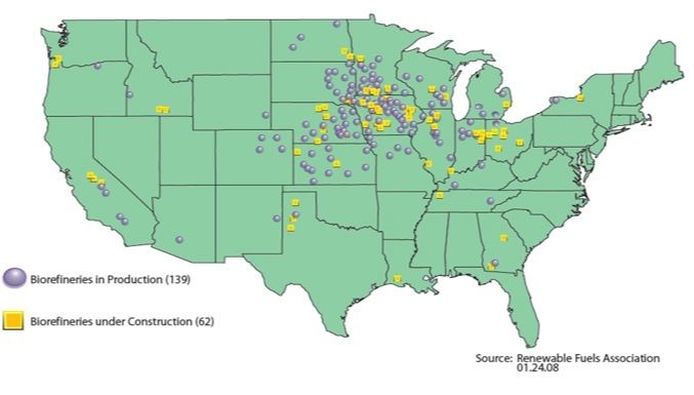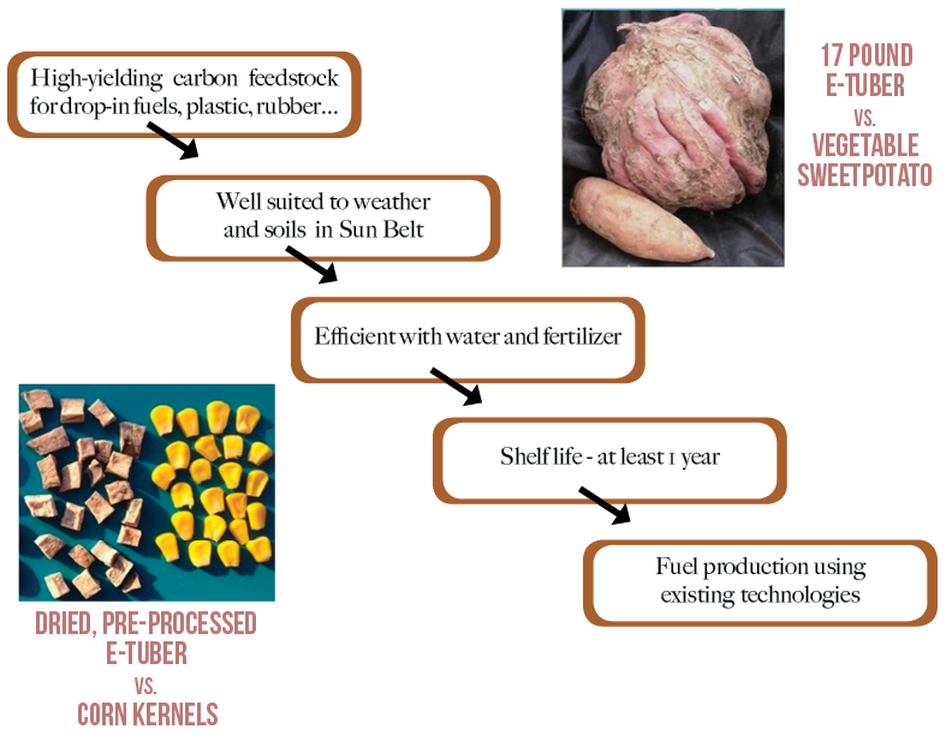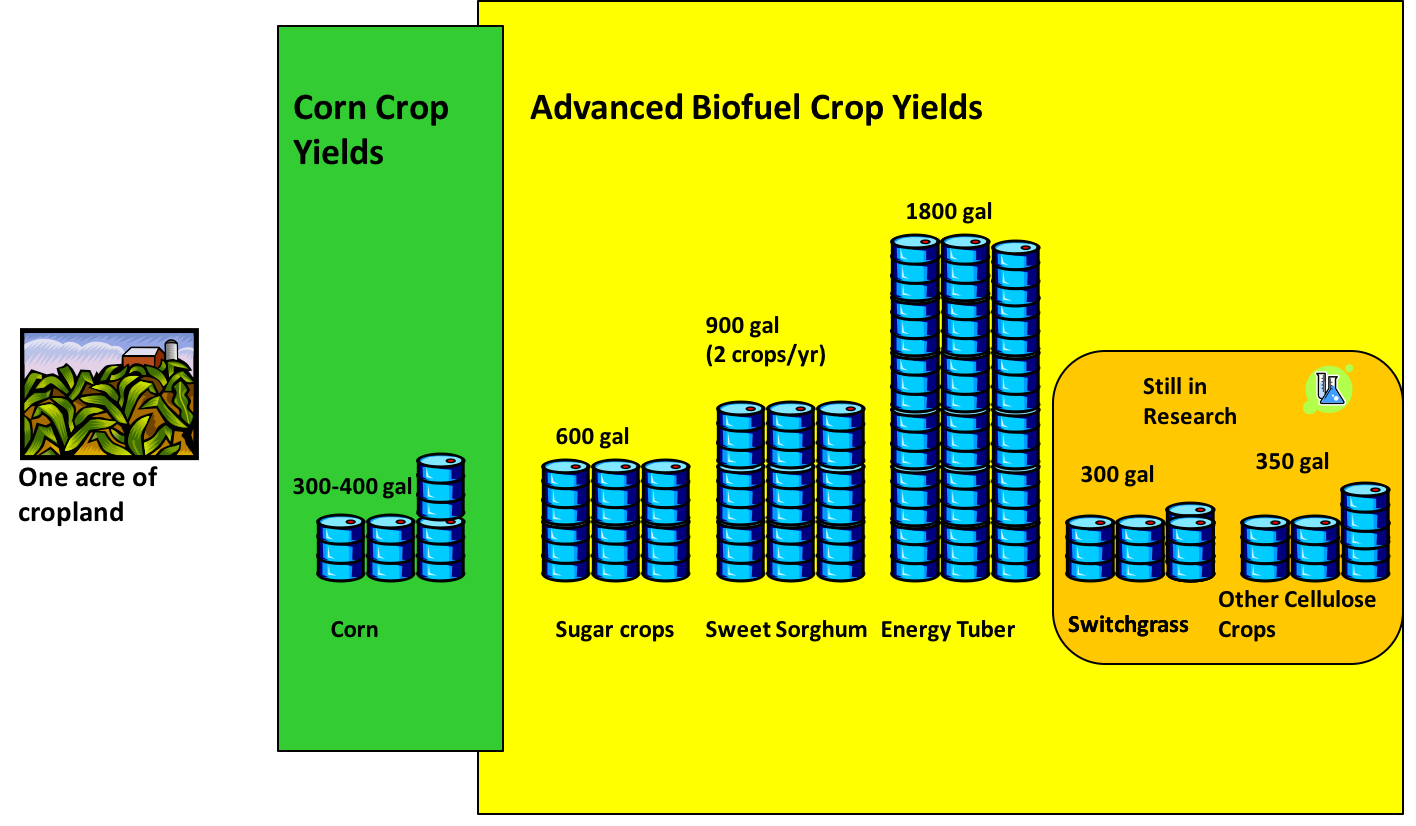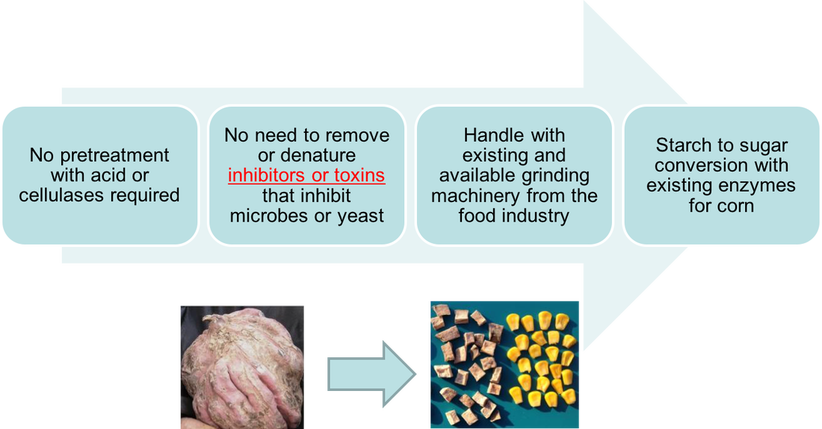THE ENERGY TUBER - A VERY HIGH YIELDING, SUSTAINABLE FEEDSTOCK FOR FUEL
Energy Tuber Allows Expansion of
American Production Facilities to Sun Belt States
American Production Facilities to Sun Belt States
- There are few fuel ethanol biorefineries in Sun Belt, despite long growing season, adequate rainfall, and abundant farm land, due to the lack of an adapted feedstock crop – until NOW.
- The Energy Tuber grows well from NJ to FL, across the southern states to CA
Requirements for the Ideal Feedstock for Biofuels and Bio-based Products: |
Produce high yields of low cost sugar; be cost-competitive with fossil fuels |
Qualify as an ABF to receive subsidies and RINs (to build infrastructure to compete) and as a transitional feedstock for existing corn plants |
Produce abundant supply near processing plants and users – Adapted to the sunbelt |
Be easily converted by microbes and yeast without inhibitors to microbe growth |
Integrate easily into today’s technology (such as corn fermentation plants) |
The Energy Tuber is ideal
Ethanol Crop Yield Comparison |
Corn vs. Advanced Biofuel Crops |
CORN |
ENERGY TUBER |
CELLULOSIC |
400 gallons/Acre |
1800 gallons/Acre |
300 gallons/Acre |
High need for water/fertilizers succeeding commercially |
Low need for water/fertilizers ready to succeed commercially |
In research stage, has yet to succeed commercially |
Grows best in MidWest USA with limited population |
Grows best in all Sunbelt states |
Very costly to commercially convert to fuel |
The Energy Tuber, processed with today’s technology, acts as a drop-in-feedstock for corn ethanol plants. |
Energy Tuber Feedstock Production Cost of Sugar from Energy Tuber and Ethanol Output Vs. Corn |
- Calculations based on 45 wet tons per acre, 33% dry wt., and 85% starch and sugar
- Current estimates are $0.08-0.10 per pound sugar, which can be reduced through
further mechanization of the crop planting and harvesting. - Total production costs vary slightly by region. Costs include farmer profit.





